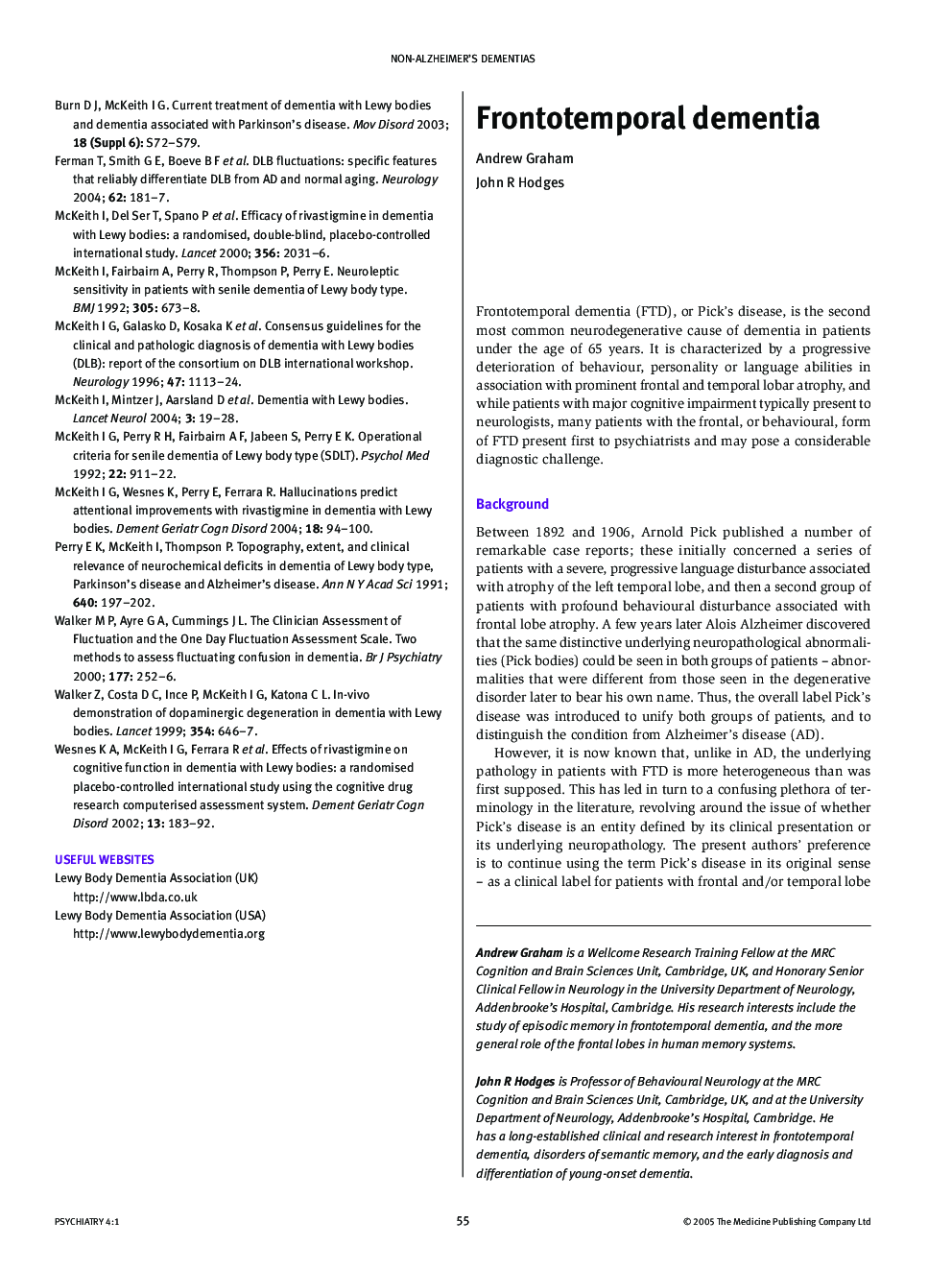| کد مقاله | کد نشریه | سال انتشار | مقاله انگلیسی | نسخه تمام متن |
|---|---|---|---|---|
| 9381857 | 1278187 | 2005 | 4 صفحه PDF | دانلود رایگان |
عنوان انگلیسی مقاله ISI
Frontotemporal dementia
دانلود مقاله + سفارش ترجمه
دانلود مقاله ISI انگلیسی
رایگان برای ایرانیان
کلمات کلیدی
lobar atrophyChromosome 17 - 17 کروموزومmotor neuron disease - بیماری نورون حرکتیPick's disease - بیماری ویروسnon-Alzheimer's dementias - دمانس غیر آلزایمرOld age psychiatry - روانپزشکی قدیمیSocial cognition - شناخت اجتماعیfrontotemporal dementia - فراموشی پیشانی گیجگاهی، انحطاط پیشانی گیجگاهیorbitofrontal cortex - قشر اوربیتوفرنتال
موضوعات مرتبط
علوم پزشکی و سلامت
پزشکی و دندانپزشکی
روانپزشکی و بهداشت روانی
پیش نمایش صفحه اول مقاله

چکیده انگلیسی
Frontotemporal dementia (FTD), or Pick's disease, is the second most common neurodegenerative cause of dementia in patients younger than 65 years. FTD may present in two main ways: with personality change and behavioural disturbance (in association with frontal lobe atrophy), or with language impairment (in association with temporal lobe atrophy). While patients with major language impairment typically present to neurologists, many patients with the frontal, or behavioural, form of FTD (fvFTD) present first to psychiatrists and may pose a considerable diagnostic challenge. One reason for this challenge is that despite manifesting gross changes in social behaviour that severely disrupt their working and family life (such as disinhibition, loss of empathy, changes in eating patterns, ritualized or stereotypical behaviours and apathy), many patients with early fvFTD perform flawlessly on simple bedside tests of cognitive function. Brain imaging may also be normal in early fvFTD. Because patients are almost invariably lacking in insight, carer-based assessments are therefore of key importance in making the diagnosis. Unlike in Alzheimer's disease, the underlying pathology in FTD is rather variable, with three main variants. A small proportion of familial cases have been shown to have mutations of the tau gene on chromosome 17. The association between FTD and motor neuron disease (MND) deserves special mention. A significant minority of patients with FTD go on to develop features of MND, and MND pathology should be suspected in any patient with rapidly progressive disease or the emergence of bulbar symptoms. Management in all forms of FTD is essentially symptomatic and ideally involves a multidisciplinary team.
ناشر
Database: Elsevier - ScienceDirect (ساینس دایرکت)
Journal: Psychiatry - Volume 4, Issue 1, 1 January 2005, Pages 55-58
Journal: Psychiatry - Volume 4, Issue 1, 1 January 2005, Pages 55-58
نویسندگان
Andrew Graham, John R Hodges,